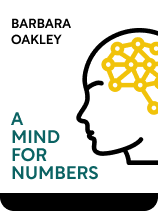

This article is an excerpt from the Shortform book guide to "A Mind for Numbers" by Barbara Oakley. Shortform has the world's best summaries and analyses of books you should be reading.
Like this article? Sign up for a free trial here .
Why should you study in groups? How do you keep the group functional and effective?
Barbara Oakley discusses the benefits of group study when it comes to maximizing your learning. She also offers insights for keeping the group healthy and on task.
Read more to about effective group study.
Effective Group Study
In her book A Mind for Numbers, Oakley discusses the benefits of group study and shares tips to avoid study group dysfunction.
The Benefits of Group Study
Your brain is not very good at catching its own mistakes. Oakley notes that working with a group means you can catch each other’s errors and resolve them more quickly.
Furthermore, different people see the material from different angles. When groups discuss information, Oakley says the conversation acts like a super-diffuse mode of thinking that can connect ideas from different brains. This can generate creative solutions and enhance everyone’s understanding.
(Shortform note: This advice is echoed by Brown, Roediger, and McDaniel. They recommend collaborative learning and peer reviews as countermeasures against false perceptions and illusions of competence.)
The benefits of group study include mild stress, which is caused by working in groups. Oakley asserts that practicing what you are learning under mild stress allows you to perform it better under greater stress.
| Stress Exposure Training Oakley isn’t alone in suggesting that practicing tasks under mild stress helps you to perform in high-stress situations. In fact, this principle underpins“stress exposure training” or “stress inoculation” methods, which claim to help athletes, military personnel, surgeons, and others perform better in stressful situations. Formal stress exposure training is usually a three-phase program: First, instructors teach you about the psychological and physiological effects of stress. Then, they teach you coping mechanisms to deal with the stress in the situations you are likely to encounter. Finally, they try to simulate the stressful situation in question so you can practice under realistic conditions. Research into and commentary on stress exposure has focused almost exclusively on these formal training programs, rather than everyday situations in which stress exposure may be applicable. This makes Oakley’s recommendation of practicing mild, informal forms of stress inoculation (such as doing homework in a study group, or timing yourself with the Pomodoro technique) relatively original. |
Avoiding Study Group Dysfunction
In addition to sharing some of the benefits of group study, Oakley also provides tips for keeping a group functional. She asserts that, for study groups to be effective, the group must stay on task. She warns you to watch out for the symptoms of a dysfunctional study group:
- People arrive late or come unprepared.
- Conversation frequently drifts off-topic; people are socializing instead of studying.
- Focus shifts from the material to the people, creating a “safe environment” where people don’t criticize each other’s work, and thus don’t catch each other’s mistakes.
- You find yourself watching other people solve problems instead of participating in the solution process.
To mitigate the last symptom, either solve the problems first on your own and then compare solutions in the group, or at least outline a high-level solution for each problem before meeting with your group to finish solving the problems.
| Comparing Study Groups to Meetings Since a study group is a type of meeting that involves a team of sorts, let’s compare Oakley’s advice about avoiding study group dysfunction to Patrick Lencioni’s advice on avoiding dysfunction from Death by Meeting and The Five Dysfunctions of a Team. Fear of Conflict Lencioni identifies fear of conflict as one of the five dysfunctions of a team, and asserts that finding conflict is one of the keys to effective meetings. Like Oakley, Lencioni notes that teams tend to avoid disagreement on technical issues if they feel disagreements could devolve into personal conflict. However, they offer different solutions to the problem: Oakley recommends keeping the group focused on the material, not on the people, so disagreements don’t get personal. Lencioni asserts that fear of conflict ultimately stems from a lack of trust, and thus that the key to overcoming it is to build mutual trust among members of the group through sharing personal histories, providing mutual feedback, and other exercises. Accountability and Preparedness Lencioni identifies avoidance of accountability as another of the five dysfunctions of a team, and observes that it leads to low standards of individual performance. People arriving late or unprepared is one example of behavior that exemplifies low standards or little sense of personal accountability, so this also fits with Oakley’s description of a dysfunctional study group. To mitigate this, Lencioni advises publishing clear goals and expectations. In the case of a study group, this might be as simple as agreeing up front that everyone will at least outline a possible solution to every assigned problem before the start of the study session. Meeting Structure Lencioni identifies poor structure as one of the key problems that make meetings ineffective. This corresponds with two of the symptoms of a dysfunctional study group that Oakley identifies: conversation drifting off topic, and finding yourself watching others solve problems instead of participating. To solve the problem of poor structure, Lencioni proposes four templates for different kinds of meetings, but they are all designed to fill certain business needs that differ from the needs of a student study group. That said, we can infer ways of imposing structure on a study group that would help to avoid the pitfalls Oakley warns of: Perhaps you divide up the assigned problems in advance, and each person comes prepared to present solutions to certain problems to the group. Or, to reinforce the expectation that everyone comes prepared to solve any problem, perhaps you assign each person in the group a number, and, for each problem, you roll dice to determine who will present the solution. |

———End of Preview———
Like what you just read? Read the rest of the world's best book summary and analysis of Barbara Oakley's "A Mind for Numbers" at Shortform .
Here's what you'll find in our full A Mind for Numbers summary :
- How to make math and science intuitive
- Strategies for remembering complex concepts more easily
- How to build good study habits and avoid procrastination






